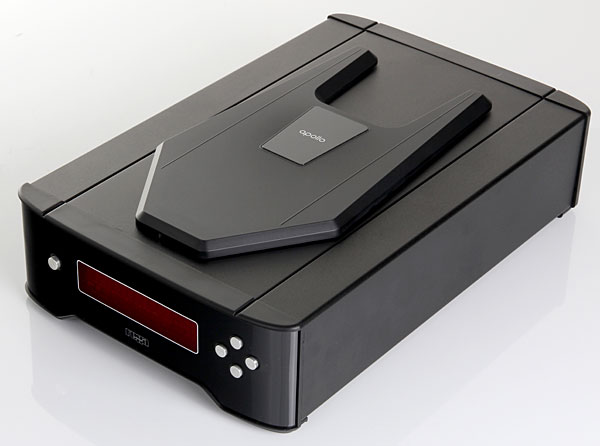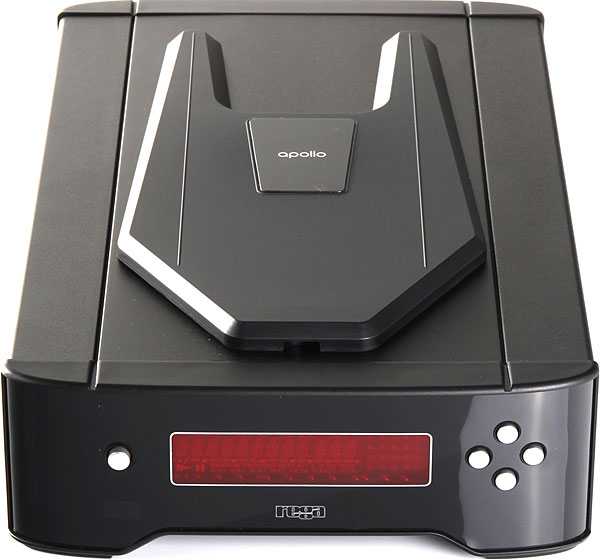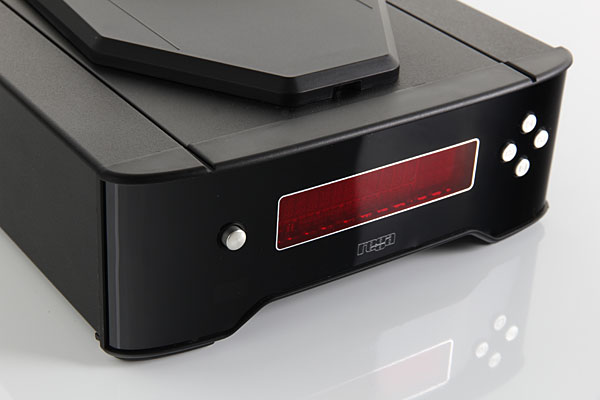| Columns Retired Columns & Blogs |
Nice review. I'm in my first month of ownership of a Marantz SA8005 and I love it. I sincerely hope that the forecasted death of the CD does not come to pass.
Listening
I began my listening with Liszt's arrangement for piano of Wagner's Tannhäuser overture, performed by Jorge Bolet, from Rediscovered: Liszt Recital (RCA Victor Red Seal 63748-2). The sound wasn't as extended in the bass as I'd expected—eg, a phrase in the left hand at about 4:30 was clearly drawn but lacking in heft. The overall result was a lighter balance than with my Sony SCD-777 SACD/CD player and other good-quality players of my recent experience: light, but not too light. The musical effect was to highlight aspects of Bolet's technique, especially his very deliberate phrasing and often forceful note attacks. While listening to the descending lines that begin about 12:00 into the Wagner, I even had a pretty good idea of his pedal technique. As the liner notes say, this is a hair-raising performance, and the Rega did it justice.

I then switched gears by trying some of my favorite bluegrass discs in the Apollo, beginning with the mid-1990s reissue of the 1965 instrumental collection Appalachian Swing!, by the Kentucky Colonels (Rounder CD SS 31). Again, the balance was a bit light—just enough to render the sound a little more explicit and forward than usual. In "Clinch Mountain Backstep," the entrance of fiddler Bobby Slone was more thrilling than usual, and the offbeat timing of guitarist Clarence White was made brilliantly clear. I'm an amateur guitarist—I wish I'd had so explicit a CD player 22 years ago, when I first began trying to learn some of White's signature phrases. Indeed, about 1:36 into "I Am a Pilgrim," as he handed off a solo to brother Roland, I heard from Clarence a brief phrase that until now had escaped my attention. In "Ookpik Waltz," from David Grier's I've Got the House to Myself (Dreadnought 0201), the tone and touch of his guitar playing were reproduced as realistically as I've ever experienced—and Grier's is a sound I know well, having more than once heard him perform in my living room. Here, too, I heard from the Apollo something I'd never before noticed in the literally hundreds of times I've listened to this disc: the sound of Grier tapping his foot, beginning at about 0:42.

When the recording contained it, there was no shortage of low-bass information from the Apollo. In "Almost Like the Blues," from Leonard Cohen's Popular Problems (Columbia 88875014292), the (presumably synthesized) bass line was entertainingly deep and full, as could also be said of Joe Ayoub's electric bass in "Samson in New Orleans." No stranger to the obvious, I also reached for Fritz Reiner and the Chicago Symphony Orchestra's 1962 recording of Strauss's Also sprach Zarathustra (RCA Living Stereo/JVC JMCXR-0011). The introduction's famous low C, played by the double basses and organ, was adequately strong—rightly or wrongly, other CD players, such as the above-mentioned Sony, give it a little more weight—but where the Rega really shone was the same note at the work's end, now plucked by the double basses and set against a B triad from the woodwinds. That low C had what I thought was the precisely correct weight and a beautiful sense of touch, not to mention superb pitch certainty.
Where spatial performance is the intoxicant du jour, I'm a cheap date: I'm interested mostly in scale, my primary concern being that the sound be really big when it's supposed to be. (Yes, it's also nice when things that aren't supposed to be big don't sound big, but let's be honest: Any crap system can sound little.) Apart from that, all I ask is that the gear can bring solo voices forward of the rest of the mix, add a suggestion of stage depth, and show me approximately where on that stage the instruments and voices are coming from. If it can, I'm perfectly content. The Rega Apollo was, in that curious borderline-flat-earth way, minimally good at soundstaging and stereo imaging and all that, but no more—and that was fine with me. With the classic recording of Wagner's Lohengrin with Jess Thomas, Elisabeth GrÅmmer, Dietrich Fischer-Dieskau, and the Vienna Philharmonic, conducted by Rudolf Kempe (3 CDs, EMI CDS 7 49017 8), as Lohengrin first approaches under swan power (Act I, end of scene ii through beginning of scene iii), the sort-of counterpoint between the male and female choristers was enhanced by the distinctions between the groups' positions onstage—and Lohengrin himself sounded, at first, appropriately distant.
The poorest performance I heard from the Apollo was probably when I asked it to play the original CD edition of Bob Dylan's New Morning (Columbia CK 30290). The songs on that 1970 collection—probably the last ones from my favorite Dylan period, which began with the oft-bootlegged songs that were informally recorded in 1967, in West Saugerties, New York—are brilliant, but while the production is musically astute, the recording is thin, distant, and altogether pallid: shortcomings on which the Rega tattled without mercy.

The Apollo's best performance? Although there were almost too many to choose from, I point to trumpeter Blue Mitchell's Blue's Moods (Riverside/JVC VICJ-60173), on which the backing band—drummer Roy Brooks, bassist Sam Jones, and, especially, pianist Wynton Kelly—sounded colorful, clear, impactful, and downright live, and came through the Rega with what seemed to me a perfect balance of bass and treble.
Conclusions
Forced to sum up the Rega Apollo's sound in a sentence or two, I would write: This player has a sonic brilliance—a clarity of detail and of musical line, allied with a spatially up-front presentation—that enhances musical engagement. The Apollo doesn't gladly suffer bright or timbrally threadbare CDs—something I dimly recall being even truer of the original Apollo—but with most discs I tried, it provided enjoyable, involving, nonfatiguing sound.
My thoughts on value are even more concise. As with other Rega products—their entry-level tonearms come to mind—few other audio components of my experience, and no other contemporary CD players, offer so much music for so little money. Unless your system has an egregiously bright sound, you can't go wrong with the Rega Apollo. And if your heart is set on spending $10,000, go ahead and buy nine of these and spread the love. Robustly recommended.

Nice review. I'm in my first month of ownership of a Marantz SA8005 and I love it. I sincerely hope that the forecasted death of the CD does not come to pass.

... "three tiny, spring-loaded metal balls" appears identical to the sort of mechanism found in a $20 portable CD player.
If you like the performance of the Wolfson WM8742 DAC, then you ought to try the Onkyo C-7070 CD player, which uses a pair of them - and costs only $800:
https://www.onkyousa.com/Products/model.php?m=C-7070&class=Compact%20Disc&source=prodClass

it depends.ten years ago i bought the third nagra cdc ever made,actual list €16500.lately i began to suspect that the cdpro drive stuttered on some cdrs.i sent it back to nagra where,after three weeks it came back with a brand new drive,a software upgrade and the old drive which had proved blameless on examination.price including shipping was well less than a tenth of list.draw your conclusions
michele,from rome